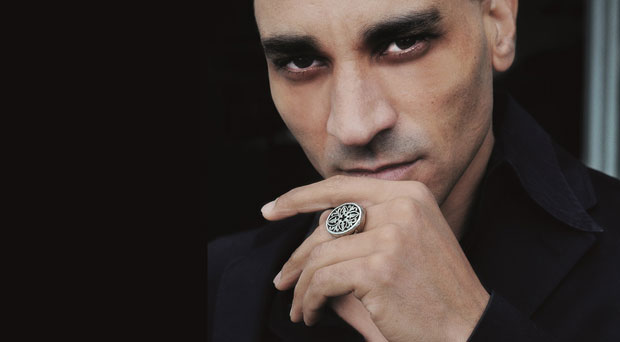
© and courtesy MuzArts. (Click image for larger version)
Margaret Willis catches up with choreographer Patrick de Bana to talk about his choreographic life and latest project – contributing to Svetlana Zakharova’s show Amore – which tours to the UK in November.
patrickdebana.com
www.svetlana-zakharova.com
Svetlana Zakharova’s Amore, London Coliseum, 21-25 November 2017
For this writer there is no better way to do an interview than sitting under an umbrella by the side of a crystal clear aqua swimming pool, with the sun pouring down, forecasting another lovely day. Add to this a subject who is a dynamic member of the dance family who bubbles over with enthusiasm and passion for his work and his life, and the interview suddenly takes wonderful shape.
Patrick de Bana is a prolific choreographer in demand all over the globe. He is also an elegant and gracious dancer. We met in Limassol, Cyprus where his work, Rain before it Falls, is on the triple bill programme of Svetlana Zakharova’s Amore, a programme which is coming to London in November. In the work, which he describes as being about ‘love, solitude, saying goodbye and memories’, he himself partners Zakharova and together they demonstrate a unity of movement that is sublime to watch. Her balletic skills are legendary, but in this work she is expected to contort and release that normally classically-disciplined body. And she could have no better teacher than de Bana. His moves are sleek yet angular, sensual yet slinky, emotive and evocative.

His own eclectic background adds a combination of the exotic and innovative to his work. “I was born in Hamburg to a German mother and Nigerian father – – and my grandparents came from Poland, so I was quite unconventional,’ he laughs. He started ballet lessons at five and studied at the Hamburg Ballet School before joining Bejart Ballet Lausanne, where he quickly rose to principal. He danced there for five years before moving over to the Compania Nacional de Danza of Spain, directed at the time by Nacho Duarto, where he was a principal for the next ten years. In 2003 he formed his own company, Nafas Dance Company with the goal of showing his unique talents in fresh new ideas.
While De Bana is sought out by many top international companies, he is not yet a household name here in the UK, though two of his works were scheduled to be seen in London in the summer of 2014. His much-publicised colourful extravaganza of Cleopatra, created for Andris Liepa’s Ballets Russes, had to be cancelled at the ninth hour – and after glamorous photos of the spectacle appeared all over the city, in underground stations and on billboards, whetting cultural appetites. Physical problems plagued the ballerina dancing Cleopatra (Ilze Liepa ) and she was forced to withdraw – there were no understudies. However, de Bana’s production of Jane Eyre for the Shanghai Ballet did make it onto the stage at the London Coliseum just a few weeks later.

© Dave Morgan. (Click image for larger version)
“I have been working in China for some time now,” he continues. I started with the National Ballet of China, and after two years Shanghai Ballet contacted me and asked if I would like to come and stage Jane Eyre for them. I was intrigued – it seemed an impossible suggestion to transform this very English novel into a ballet for Chinese audiences – especially since I had never read it at that time! But I found out that it is one of the most read of international novels in China. It was one of the first Western books to be translated and everyone knows it from school. It is very exotic and familiar to them all. I had to study it hard – there is so much in the text – before I said, ‘Yes let’s do it.’ And it was a lovely project. Now I work regularly with that company. I am going back there after this Amore tour.”
“I have worked a lot in Europe but never had contact with the Russian ballet scene until recently. And it is a nice story of how I first met up with Svetlana. She was dancing at the World Ballet Festival in Tokyo and had invited Manuel Legris to perform Nacho Duato’s Cor Perdut with her. Later I heard she was going to dance it again at the Bolshoi with Andrei Merkuriev and I suddenly had this thought – go and tell her that you have performed this work many times, and if she wants any help with it, you’d be happy to help coach the two of them. So, while at the Festival, she graciously asked me to watch their rehearsal and make corrections, and I demonstrated the man’s role dancing with her. Five days later she said, ‘I want to work with you. I want to dance with you.” I had enjoyed partnering her and being in the studio, so naturally I was very interested.
“A bit later, I created Digital Love, a ten-minute pas de deux for her to perform in Shanghai. Going off stage at the end of that performance, she reiterated, ”Patrick I want more,” to which I happily replied, ’OK Let’s go for more’. And that’s how Rain before it Falls came about and I flew to Moscow from Italy to set the ballet. I found it hard to realise that here I was in the Bolshoi Theatre, in a studio with Svetlana, and being watched by her coach Ludmila Semenyaka. I had to pinch myself to make sure I wasn’t dreaming! I have admired Luda all my professional life, and now, here she was coaching me in such a nice way. She had excellent objective views and after the rehearsal we would sit and discuss various points. I believe in the necessity of fusing theatre and dance, and she comes from the days of good technical and dramatic training, an art which sadly is not being taught today. During our rehearsals there, she expanded new visions of dance to me – I have goose pimples just talking about her.
After interviewing de Bana, I joined the vast audience in an open-air theatre on a balmy evening, as bats flitted after insects around the floodlights. Rain before it Falls, was the second work, and in it, on a stark, dark stage, Svetlana is dressed in a vibrant purple long flowing frock, which contrasts with the black trousers and see-through shirts of the two men. Back to de Bana for what his piece is all about: “It is a story made out of emotions, something like a book or a movie that gets to you when you think back about it. In real life, you obviously can’t touch rain before it falls, but you can sense it, feel its approaching presence. So, it is with our thoughts, and this work is about that special moment that you are aware of something but nothing seems to be there. To create confusion I added a contrasting figure and this third person sits for a long time on the front of the stage dangling his legs over the side and gesticulating madly, distracting from the anguished duet between Svetlana and me going on behind him. Finally after their climax, there is a deafening ‘silence’ like the Titanic going down, and that symbolism makes me think of Svetlana as the tempest tossed then on a deathly calm ocean; I am the Titanic which has been crushed by her pain and despair; and Denis Savin – the third character – is the iceberg, angry and punishing, who is probably responsible for the woman’s anguish.”

“In my eyes, Svetlana, whom I nickname Tsarina, is absolutely modern. Her body line and physique are perfect for modern dance. It took ten days to choreograph this piece and I keep building on it. Svetlana gives input as we create – and I welcome this. It’s like a game of tennis – I hit the ball and she returns it.









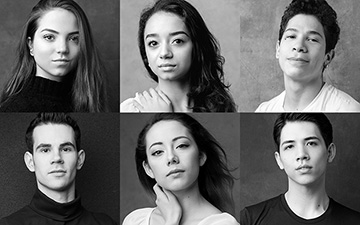
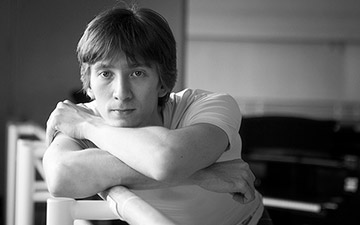
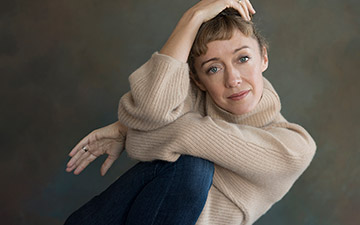




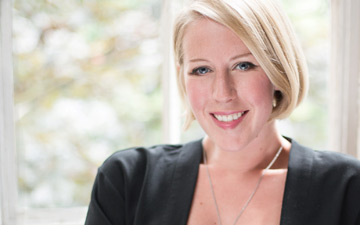
I am so looking forward to Amore in London having been swept away last year by his beautiful, sweeping ballet “Echoes of Eternity”.
If you have not as yet seen Patrick de Bana’s work, I think you are in for a treat!